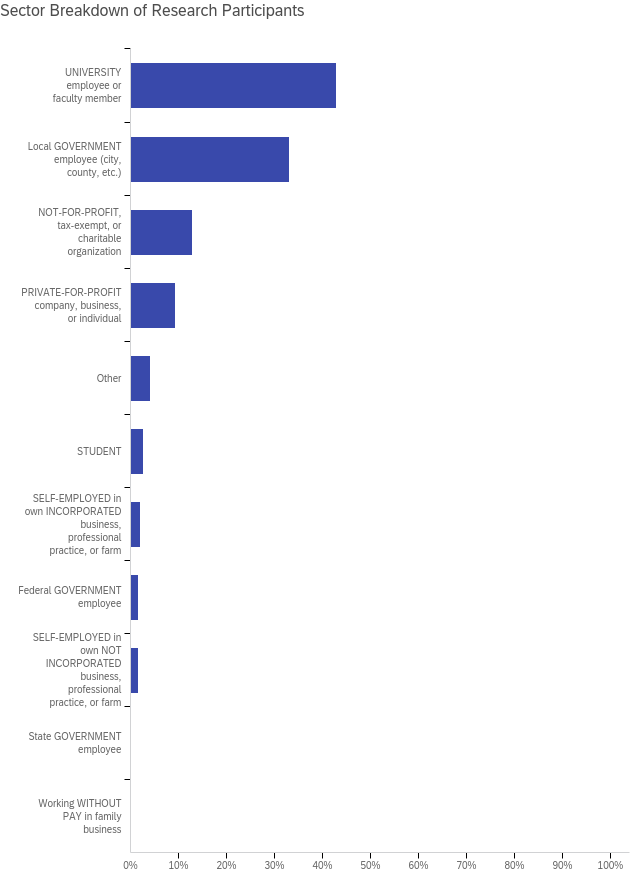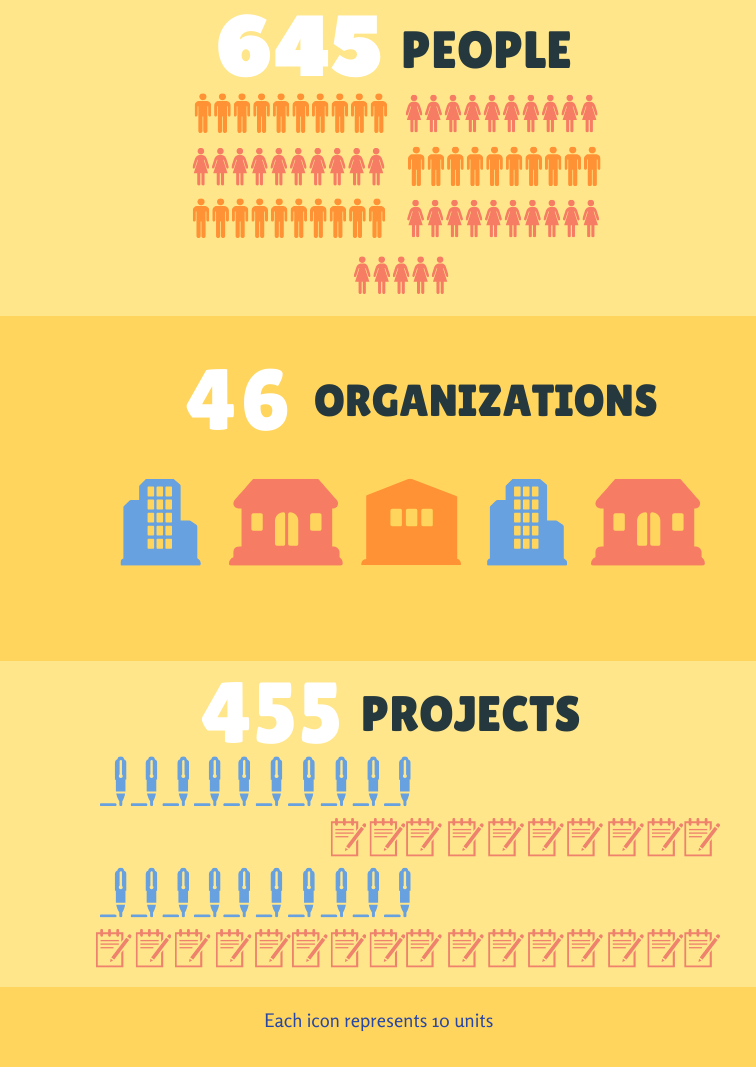Data
What Kinds of Data are Included?
The data used to generate this tool and the accompanying resources come from seven semi-structured in-depth interviews, qualitative and quantitative data from an online survey administered between March and December 2019, and a community workshop hosted in July 2019. Respondents were sourced through snowball sampling (asking an initial set of respondents to name others with whom they have collaborated on environmental sustainability projects, and then surveying those named) and targeted identification of those involved in environmental sustainability work in Fort Collins based on university department affiliation, business focus, municipal service area affiliation, or past or current involvement in known projects pertaining to local environmental sustainability initiatives.
After pilot testing with 25 people, the survey was sent through three rounds of snowball sampling to a total of 528 people and completed by 188 for a response rate of 36%. In total, information about 645 people, 46 organizations, 455 projects, and the relationships between all of these entities was collected.

Sectoral breakdown of research participants

Summary of data collected
The survey included 19 questions in a variety of styles, including multiple choice, text entry, ordering, Likert scales, and ranking. Some of the questions included:
- What does environmental sustainability mean to you in the context of your work?
- Who are the top 5-10 people you have collaborated with on projects relating to environmental sustainability in the last five years?
- What resources do you usually seek when collaborating?
- What barriers to collaboration have you experienced?
- In what areas have you collaborated most on environmental sustainability goals?
Open-ended survey responses were coded and organized using NVivo software. Network maps and centrality measures were generated with Gephi and UCINET.